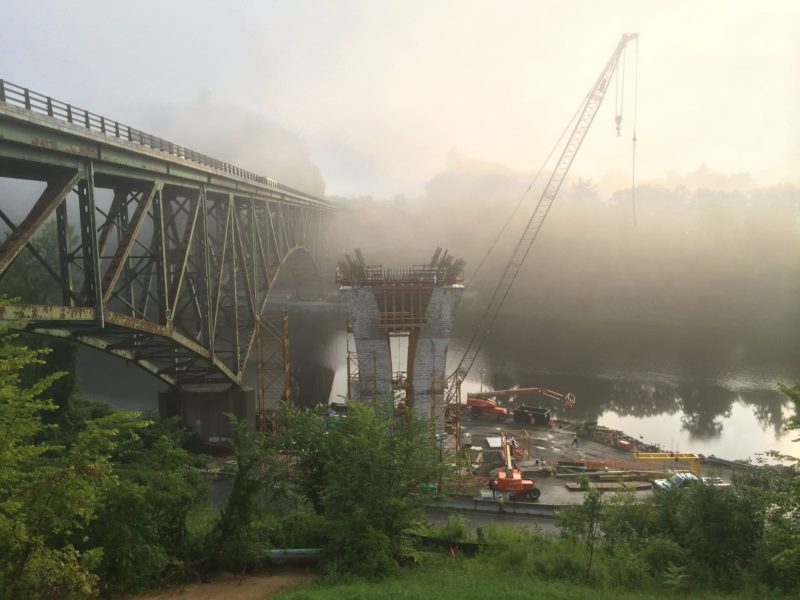Bridge design is one of the most complex specialties in the field of civil engineering, and recent software packages have helped structural engineers such as Steve Tissier at Atkins Global leap to the forefront of efficiency, accuracy and quality.
Tissier worked on the Gateway Expressway Pursuit, a massive undertaking to build new roads and ramps at six different locations near the St. Pete-Clearwater International Airport in Florida. This project entails about thirty new bridges, as well as toll roads with easy on- and off-ramp access, in the hopes of easing congestion in a heavily trafficked area. The half-a-billion-dollar project required over fifteen years of planning by the Florida DOT before construction could get underway.
As Tissier tells it, two essential software programs have been crucial to Atkins’s success on large projects such as this. One of them is Bluebeam Revu. Atkins uses Revu to handle their Quality Control (QC) process for all the documents they use—what Tissier calls “our Bluebeam QC standard operating procedure” for items such as calculations, drawings, and proposals.
In order to maintain control of the project and keep things on schedule, they have written into their contracts with subcontractors a stipulation that everybody use their Bluebeam QC procedure or an equivalent process. However, to help create buy-in, Tissier recognizes that “you have to show them the immediate benefit to them and the time it’ll save them.” One of Tissier’s go-to methods is to hold live web trainings for everybody that will be following their Bluebeam QC process. This allows participants to see the process step by step, and see how efficient it is. The company also created a forty-page standard operating procedure guide, rife with screenshots and instructions explaining how to get the most out of QC in Revu.
Instead of a five-step hard-copy workflow that is paper-intensive and prone to errors and mistakes, often involving illegible handwriting and long periods of time waiting for other parties to finish their steps, QC is now streamlined, customized, and much more easily trackable. For example, using Atkins’s former system was difficult for keeping track of who made which changes, and time-consuming to check whether or not they were ever resolved. Also, by inputting comments manually—writing them on the page, and then scanning and reprinting or emailing that document—file sizes became cumbersome, and the quality of the image was lost incrementally with each new scanned edition.
Having one master paper copy also meant that QC could only proceed as quickly as the document could be physically transferred from one party to another. If a subcontractor was working on a specific problem, the other subcontractors had to wait until that issue was resolved before moving onto the next one. In other words, if a reviewer took three days to complete Step 2 of the QC process, then Step 3 couldn’t start until the fourth day. Now, with Revu, everybody can work from the same master document using Studio Sessions and people can address comments as soon as they are made. There’s no more waiting for the hard copy, and changes are always legible and trackable, and can be denoted using customized markups. Because team members can track the lifecycle of each comment, issues are no longer mistakenly overlooked.
“We have a customized Bluebeam profile containing special markup tools with unique properties that we utilize in the markup list filters. This new workflow has resulted in an estimated 20% reduction of the time it takes to complete a QC,” Tissier says.
In a business with famously small margins, where time is money, that’s a big savings using just one small area of Revu’s capabilities.
The other innovation that Atkins is excited about is Bentley’s OpenBridge Modeler, a groundbreaking tool for bridge engineers who have not experienced 3D parametric modeling capabilities as robust as this. “Our structures are so much more complex than vertical buildings, where everything is in plane and perpendicular and parallel. It’s a big deal on our side because bridge models that used to take months to do can now be done in a matter of hours,” says Tissier.
The models are tied to the civil data, such as alignment, profile, and terrain, so when the roadway engineer has to shift one of these items, the model will automatically adjust to the new data. This saves hundreds of hours of re-work. This same model can then be pushed to the analysis software and then back to OpenBridge if anything changes in the design. This two-way flow of information is critical. The model can then be pushed to a mobile platform along with all of its associated data, so a foreman out in the field can pull up the model and have all that information at his fingertips.
Another advantage is that these two separate software programs—Revu and OpenBridge—don’t have to live in isolation. Because of Bluebeam’s emphasis on interoperability and 3D PDFs, it can be used in tandem with other design programs, thus making the experience for the end user seamless and painless.
All this is great news for owners, clients and the traveling public, as they will be able to enjoy Atkins’s transportation improvements much sooner.











